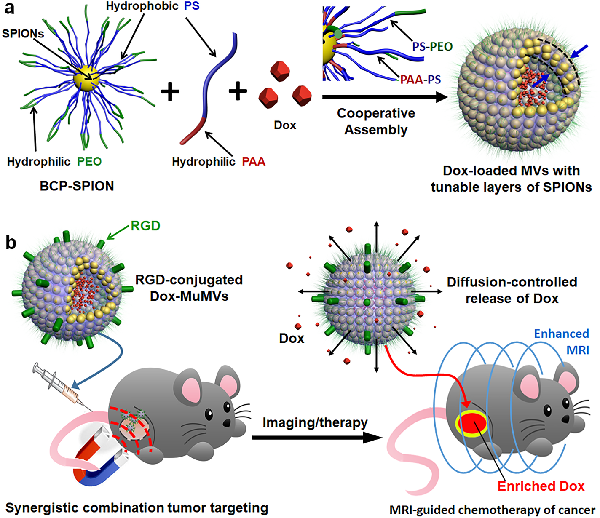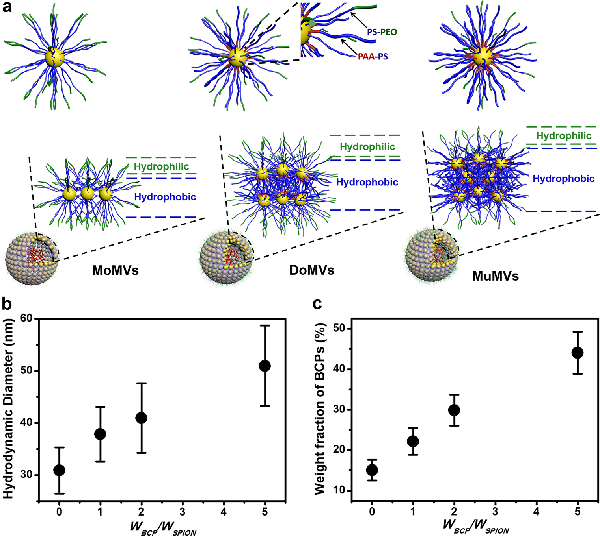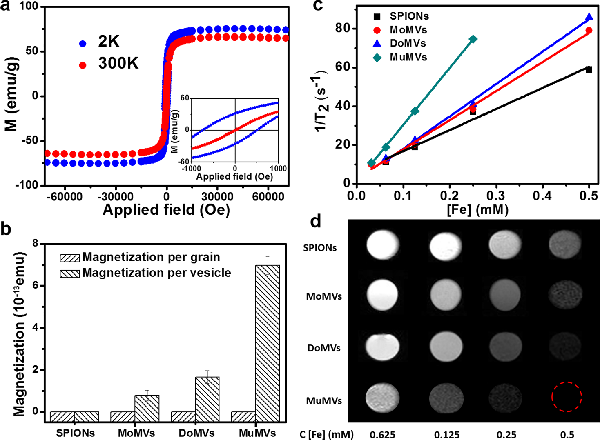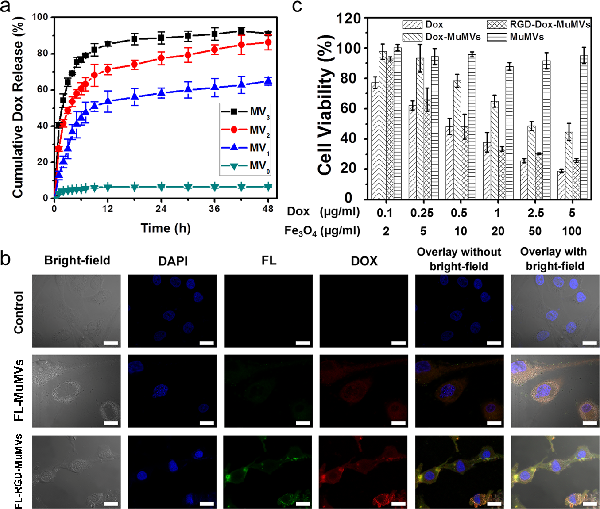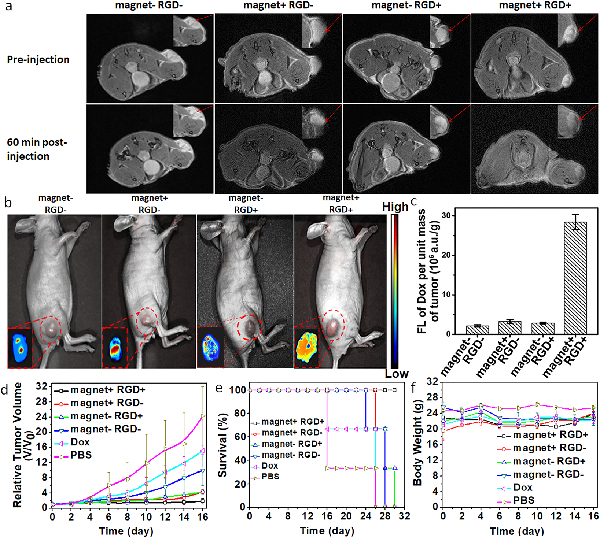introduction Due to their good stability, biocompatibility, proper size and magnetic responsiveness, superparamagnetic iron oxide nanoparticles (SPIONs) are widely used in biomedical applications such as bioimaging, immunoassays, cell separation, Tumor imaging and treatment, etc. However, the smaller magnetization of SPIONs each has limited magnetization, which limits its application in deep tissue imaging. Increasing the size of the iron oxide nanoparticles (NP) (>26 nm) results in a higher magnetic moment, but may therefore result in colloidal instability of the nanoparticles. Summary of results Recently, Professor Chen Xiaoyuan of the National Institutes of Health, together with Professor Nie Zhihong of the University of Maryland, Parker, and Niveen M. Khashab of the University of Science and Technology of Abdullah (co-author) reported the magnetic vesicles of the adjustable layer structure tightly wrapped by SPIONs. By adjusting the ratio of PS-b-PAA and SPIONs, the thickness of the film can be controlled from 9.8 to 93.2 nm, and it is observed that the magnetic vesicles change from a single layer to a multilayer structure. As the magnetic vesicle film becomes thicker, the density of SPIONs increases, the magnetization becomes higher, and the transverse relaxation rate is greatly increased. Subsequent cell animal experiments have confirmed that the vesicle has a good application in the field of diagnostic treatment. The research results were published in the internationally renowned journal JACS under the title "Cooperative Assembly of Magneto-Nanovesicles with Tunable Wall Thickness and Permeability for MRI-Guided Drug Delivery". Graphic guide Figure 1: Formation process of nanovesicles and schematic diagram of biological application (a) Fabrication of magnetic vesicles (MV) with adjustable wall thickness by BCP grafting of SPIONs and free PS-b-PAA; (b) MVs were used for imaging guided delivery of DOX into tumor-bearing mice. Figure 2: MV size and wall thickness (a) SEM images of MVs; (b) TEM images of MVs; (c) TEM images of MVs at different temperatures; (d) STEM images of MuMVs and corresponding Fe intensity scan lines; (e) STEM images of MoMVs and corresponding Fe intensity scan lines. Figure 3: Characterization of different film thicknesses (ad) TEM images of MVs of different film thicknesses; (e) The relationship between PS-b-PAA and BCP-SPIONs ratio and film thickness; (f) Self-assembly results of different proportions of SPIONs and BCP-PS-b-PAA. Figure 4: Reasons for the formation of different film thicknesses (a) Different ratios of WBCP/WSPION to form MVs with different film thicknesses; (b) The relationship between water and radius and WBCP/WSPION; (c) The relationship between the weight fraction of total BCPs and WBCP/WSPION. Figure 5: In vitro magnetic properties experiment (a) Hysteresis curves of MuMVs at 300K and 2K; (b) the magnetization of each nanoparticle in a single SPION and MV and the corresponding net magnetization of SPION and MV; (c) Comparison of magnetization of different materials; (d) T2-weighted MRI images of different concentrations of different materials. Figure 6: Different materials loaded with DOX solution and cell experiments (a) In vitro release profiles of DOX loaded with different materials; (b) Comparison of cytotoxicity of different materials; (c) Comparison of cellular fluorescence imaging of different materials. Figure 7: In vitro magnetic properties experiment (a) T2-weighted imaging of living tumor areas; (b) DOX fluorescence imaging of living tumor areas; (c) Quantitative analysis of the fluorescence intensity of the corresponding tumor region in b; (d) Injecting tumor growth curves from different materials; (e) Survival curves of mice injected with different materials; (f) Changes in body weight of mice injected with different materials. summary The authors developed a new type of magnetic vesicle (MV). The morphology of vesicles can be controlled from single layer, double layer to multi-layered vesicles. With the increase of the ratio of PS-b-PAA and SPIONs, the thickness of the film is obvious. Increase. It has also been found that MuMVs with thicker films and higher SPION densities have unique characteristics such as enhanced MRI contrast, high magnetic susceptibility of each vesicle, and adjustable release characteristics of the therapeutic agent. After intravenous administration, due to synergistic magnetic and active tumor targeting effects, MuMV conjugated to the RGD targeting moiety can be efficiently enriched in tumor sites in vivo with the help of an external magnetic field. MuMVs enhanced tumor accumulation enables efficient imaging of tumors by MRI and enhances tumor suppression. Liquid Bleach,Laundry Detergent Stain Removal,Stain Removal Bleach,Laundry Detergent Bleach Wuxi Keni Daily Cosmetics Co.,Ltd , https://www.kenidailycosmetics.com